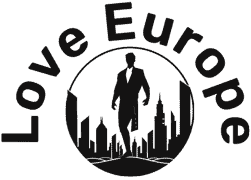A nuclear power plant can produce more energy in the smallest space when compared to other energy sources. That should make it a logical alternative to fossil fuels in the race to slow down climate change.
So why are some countries backing off from it?
Germany has already stepped out of nuclear energy usage, while England and France are planning to build new reactors.
In the year 2023, 24.5% of Europe’s electricity was generated from nuclear energy, while alternative green energy sources made up a total of 43% in energy production in Europe. As nuclear energy remains the biggest energy contributor in countries which still have active plants, an exit might be easier said than done.
Currently around 37% of electricity in Switzerland comes from nuclear reactors. In 2017 the people of Switzerland voted to ban the construction of new atomic reactors, phase out existing nuclear plants when they shut down and make large investments into net-zero energy sources.
Leaving nuclear behind isn’t easy.
Lukas Aebi, the managing director of the Swiss Nuclear Forum, doubts that Switzerland, which relies on nuclear energy, will be able to completely exit from it by the year 2050.
“Switzerland gets around 60% of its energy from fossil fuels and yet nuclear energy costs less,” Aebi said.
Both nuclear and alternative renewable sources will be needed to meet the country’s energy demands, he said. But decisions on energy investments made at the government level are often based on politics rather than practicalities.
“There isn’t really a visible middle line that you can choose,” Aebi said “You’re either strictly pro-nuclear energy or you’re strictly against it.”
Michael Prasser, a professor emeritus at the Department of Mechanical and Process Engineering at the Institute of Energy and Process Engineering in Zurich, said that memories of past nuclear disasters affect political decisions today.
“After the nuclear meltdown in Fukushima, people grew fearful and had their memories of the Chernobyl accident revived,” Prasser said. “Soon people in Germany had started criticising the safety of German nuclear reactors and their potential dangers. The media immediately sided against the preservation of our power plants.”
Not all nuclear plants are the same.
Both Aebi and Prasser agreed that it is difficult to correct the misconceptions. “Back then, I tried to explain the differences in safety precautions between our reactors with the ones in Fukushima, but not many people were interested in technical aspects,” Prasser said. “Meanwhile the media used my statements selectively to fit their stories. Since then, Fukushima has been a prime example for raising doubts when talking about nuclear energy.”
Aebi said that most people can’t see that safety regulations are much tighter in Europe now.
“Most concerns about safety issues or arguments for shutting down power plants nowadays go back to the Fukushima incident,” Aebi said. “Since then, even the European Union has been monitoring the safety issues around nuclear energy production.”
Aebi said that construction plans take more time in Europe than in other countries like China or Russia because of the tight regulations and safety checks.
“To counter negative attitudes, it would be best to have more transparent risk analysis of nuclear reactors and their potential flaws and to show these to the public.”
Different energy sources for different places
Currently nearly all the countries, such as Spain and Belgium, that were planning to give up nuclear energy have extended their exit deadlines.
The reasons are not hard to find. Up to now, Spain, for example, has enjoyed rapid economic growth at nearly three times that of the European average growth of 0.9%. Forcing a rapid change of energy sources could stall that growth.
Spain has been investing heavily in solar energy with a goal of ending nuclear energy. But nuclear currently accounts for almost 22% of its electricity and a complete and sudden exit could result in rising electricity costs making domestic production of goods more expensive.
Not every European country has the necessary resources — windy days, sunny climate or geological factors — that would enable it to convert from nuclear energy to alternative green energy.
Switzerland’s mountainous geography, for example, makes it suited for hydropower plants and solar panels that could potentially cover the energy output of nuclear reactors.
On the other hand, countries like the United Kingdom and France, which have no plans to get rid of their nuclear reactors, are nevertheless determined to capitalise on solar or offshore wind-energy as well.
Reaching net zero
Many countries that pursue a net-zero goal have trouble meeting energy needs year round. For countries like Finland and Sweden with colder climates and frequently changing weather, solar and water-generated energies are’t a reliable option. So active nuclear power plants seem to be the only guarantee for continuous energy flow in those European regions, at least for now.
Poland, in contrast, would rather bet on investing in new reactors in order to secure its energy reserves during its long winters. This doesn’t necessarily mean that it has run out of options, but it can’t depend solely on possible alternatives like geothermal energy or bioenergy that are still being developed.
Martin Rüdisüli, a senior energy expert at the Association of Swiss Electric Companies (VSE), said that each country will make different policy decisions. “Some will accept the potential risks that come with nuclear sources and others will argue that it is an ideal technology for securing energy generation that provides assurance for electricity reserves,” Rüdisüli said.
Nations sometimes cling to the forms of energy production they are familiar with, Rüdisüli said. In some cases the retirement of nuclear reactors is not even an issue. Energy prices would affect many people and cause major financial difficulties for the whole nation.
In Germany and France, people’s fears dictate national policy — but the fears are different, and therefore the results are too. Germans worry about nuclear catastrophes while the French are more concerned about a financial meltdown, Rüdisüli said.
Leaving the exit door open
Considering all these factors and movements in the field of atomic energy, the future of it in Europe is uncertain. At the moment, even the planned exit from atomic energy by countries such as Spain, Switzerland and Belgium are not seen as realistically achievable in the short time planned for it.
The future of nuclear power in Europe is difficult to predict. There have already been extensions of exit dates and insufficient development of alternative energy sources.
Still, it is evident that many European countries are investing or developing heavily in their fields of renewable energy sources, even if they have not decided definitely if or when to go completely non-nuclear.
Of course, all this begs the fundamental question of whether nuclear energy itself is a green source of energy and if it is the right way to fight climate change.
Answering that question is not straightforward. It is easy for nuclear experts to say that nuclear reactors don’t produce greenhouse gas emissions, but they cannot deny that the radioactive toxic substances which are a byproduct of the production process remain a present and long term problem.
Handling the toxic waste
The countries of Switzerland, Spain and Belgium still lack a final storage solution for radioactive waste. Switzerland has plans to build one, but it will only start construction in 2045. Spain is even further behind.
Spain currently only has its “El Cabril” storage facility, which was not originally intended for high radioactive waste — and it exports some of the hazardous waste to France.
The biggest advantage a nuclear power plant has compared to other renewable energy sources is the amount of energy it can produce and the smaller space required by these reactors.
At first sight keeping nuclear reactors running seems like a logical solution, but in reality, the entire life cycle of one reactor needs to be taken into account and how many polluting gases are emitted during construction and operation.
Data from the German Environment Agency shows that while nuclear energy burns less carbon than coal or natural gas, it emits more carbon than wind farms or hydroelectricity. The construction cycle of newer reactor types causes even more emissions, so relying on nuclear reactors for a climate-friendly future appears unrealistic.
In the meantime, according to the International Energy Agency (IEA), nuclear energy represents the backbone of the response to power sector decarbonisation. In the face of today’s energy crisis, the move away from fossil fuels and reaching net zero emissions of greenhouse gases have become top energy security priorities.
The IEA states that nuclear energy contributes to both goals by avoiding 1.5 gigatonnes of global emissions and 180 billion cubic metres of global gas demand a year. So in countries where nuclear energy has been accepted, it can help ensure secure low emissions electricity systems.
Nevertheless, at the moment there is no country that can afford to abandon its nuclear power programme in the next five years. Even the countries that have pledged to go non-nuclear may well have to announce further delays to their exit strategies.
Source link : https://news-decoder.com/europe-learns-it-isnt-easy-to-nix-nuclear-energy/
Author :
Publish date : 2024-03-22 07:00:00
Copyright for syndicated content belongs to the linked Source.








